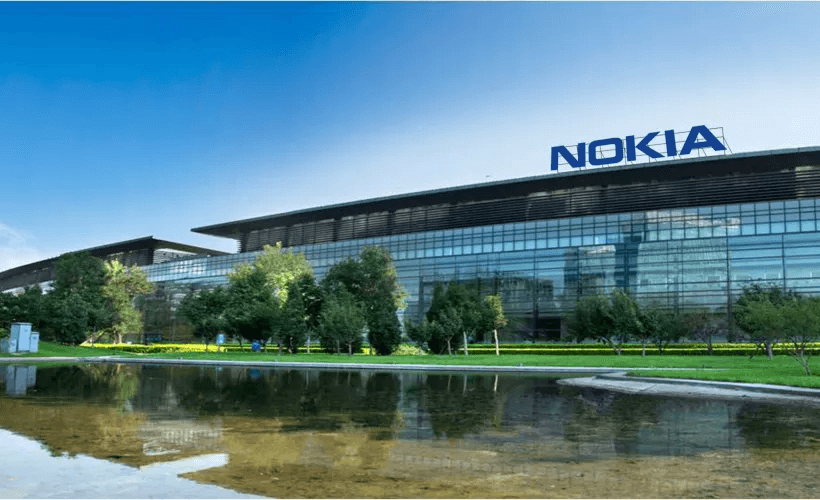Nokia is a symbol of the mobile phone industry’s true giant. As we look back, we see a story of the rise and fall of a company that was known as the King of the mobile world and lost its throne. Let’s dive into the history of Nokia, we will explore different factors that led to the downfall of Nokia and the lessons that can be learned from its dramatic story.
Historic journey of the Highly Nokia
Nokia’s journey started in 1865 in Tampere, Pirkanmaa, Finland as a pulp mill, and in the 1980’s it quickly started to dominate the mobile market. It was viewed with National pride by Finns, as its mobile phone business made Nokia the largest worldwide company and brand from Finland.

As its rise in 2000, Nokia made 4% of the country’s GDP, 21% of total exports, and 70% of the market capital’s Helsinki Stock Exchange. Between 1996 and 2001, Nokia’s revenue increased from 6.5 billion euros to 31 billion euros, and between 1998 and 2012, Nokia was the world’s largest mobile phone manufacturer. Its early achievements can be associated with its unwavering dedication to innovation, resulting in the development of durable and dependable phones that captivate consumers worldwide. The indestructible Nokia 3310 and Snake game, became the symbol of the brand’s popularity.
Dawn of smartphones: Challenge of Adaptation
The landscape of the mobile phone market began to change with the launch of smartphones. Nokia, once the undisputed leader, faced the difficulty in adapting to the new era. It entered the smartphone world but struggled to compete with the evolving trends and consumer preferences. It was slow to own touchscreen technology whereas the competitors like iPhone started to become famous in the mid-2000s. The delayed response to consumer preference left Nokia outdated in the field of user experience.
Competitive Landscape
The mobile industry became highly competitive when Apple and Samsung entered the market in 2010’s. Nokia was having a tough time keeping up with its innovative products and marketing tactics. Nokia’s reliance on the Symbian operating system hindered its ability to compete against competitors like Apple and Android, they were providing a more user-friendly and modern operating system leaving Nokia at a significant disadvantage. Nokia didn’t upgrade with time and underestimated the importance of the app stores and the ecosystem surrounding smartphones, Nokia’s Ovi Store couldn’t replicate the success achieved by Apple and Android, Limiting the availability of apps for Nokia devices.
Issues within corporate culture
One of the biggest factors contributing to the downfall of Nokia, the company grappled with various factors, including frequent leadership changes, resistance to accept change within the company’s culture and inadequate supply chain management. Nokia faced frequent changes in it’s top management, leading to shifts in decision-making and strategic direction resulting in instability and hindrances in executing long-term plans. Nokia acquired companies like Navteq (a mapping company) and Trolltech (a software development company) but faced difficulties in effectively integrating and leveraging these subsidiaries to compete with rivals.
Nokia’s long history sometimes posed challenges to innovation. Complacency within the organization made them believe that they were unbeatable in the market preventing them from identifying the need for urgent and necessary changes. Bold decision-making is often necessary to achieve success in the industry, but Nokia failed to present its stance.
The Domino Effect and Tipping Point
One wrong step, you are out of the game; for Nokia, one misstep led to another, and this interconnected web of issues accelerated Nokia’s downfall. A negative shift in consumer sentiment, severe financial losses, and market share erosion made it evident that Nokia’s decline was no longer reversible.
Lesson Learned
The story of Nokia’s Downfall teaches several key lessons. Firstly, Adaptability is undeniable in fast paced tech industry. A failure to innovate and respond to shifting consumer preferences can prove fatal. Maintaining a consistent and visionary leadership team is vital.
The story of Nokia’s downfall is a reminder of the ever-changing nature of the tech industry and the critical importance of innovation and adaptability. Nokia, the ruler of the mobile world, lost its throne due to different internal and external factors. From resistance to innovation in the company’s culture to keeping up with the smartphone revolution. Nokia’s decline offers valuable insights for businesses. The lessons from the dramatic story remain enduring and relevant.
















Leave a comment